
Over Easter, I took a short trip to Prague with parts of the family. It is a fascinating place – full of tourists and tourist businesses, but still feeling informal and homey. We tried to climb as many towers as we possibly could and visited a ton of sights in a few intense days.
Getting around
The best way to get around in Prague is with public transportation. The trams and subway get you basically everywhere, and the prices are ridiculously low by any standards. Three days of unlimited transport was 330 CZK – which is less than I pay to get to work one day in Kista.

Prague Visitor Pass
We got ourselves the Prague Visitor Pass that provided free access to transportation plus entrance to a bunch of museums, towers, and other places of interest. It does cost a bit of money, but my estimate is we made it back easily.
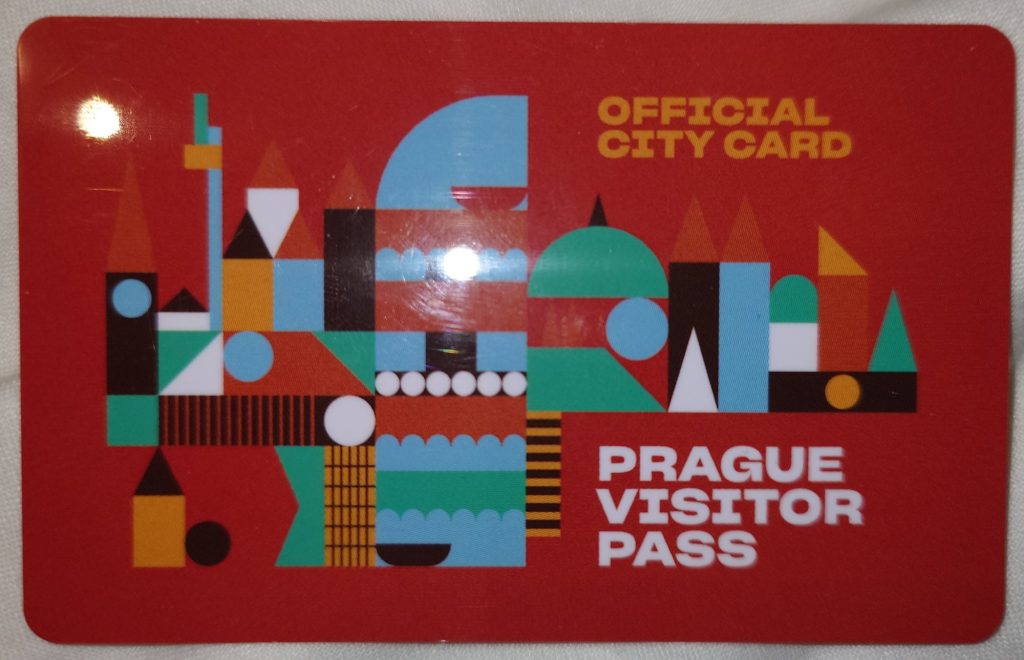
It does not apply everywhere – for example, the national museum is not included. But many things are, and the advantage of having the card is that you can just pop in and have a look at things that might otherwise have felt marginal. It costs something like 150 CZK to get into the Old Town Bridge Tower. Without the card this might have felt like it is not worth it, but with the card there is no additional cost. Opening up the door to a small but memorable experience.

History but not as you might expect
Prague is a city deep in history. It is not a Roman city, but it came into being not long after the empire fell in the west. Its history appears to start in the 700s, and there were buildings in the current area of Prague Castle in the early 900s. The older buildings have survived in much better shape than in most other large cities in Europe.

Listening to the guided tours we took and reading signs in museums, the telling of the history of Prague tends to fall back to the “good old days” of king and Holy Roman Emperor Charles IV. Around the year 1350. That is a long time ago, but buildings like the famous Charles Bridge has stood since then. There are many things called “Karl-something” in Prague thanks to him.
Another important time and figure in history is the Hussite reformation and the time after that – when Prague and Czech lands in practice become a bit more of a backwater (comparatively speaking… Prague in the 1600s was obviously a much nicer place than the up-and-coming Stockholm).
Compared to Berlin, there is very little about World War II or the Cold War, at least in downtown Prague. There are definitely some remains and monuments, but not at all to the same extent. The town hall got amputated in the Prague uprising in the closing days of World War II, which is memorialized inside the building (if you take a guided tour).
Czechoslovakia was part of the eastern block with a repressive regime and the Soviet/Warsaw pact invasion of 1968. There was this plaque remembering Jan Palach in Vaclav square. There were also tours available telling the story. But it is nothing like the Berlin obsession with the communist era.

Overall, the focus is on the older history.
One part of that older history that did show up repeatedly was the Thirty Years’s war and the Swedish attack in 1648, just at the tail end of the war. You should not miss the defenestration window in the castle where the war is said to have started.

The attack in 1648 is also remembered as a heroic act of resistance. The Swedes took the castle and carted home most of the treasures, but could not cross the Charles Bridge into the town itself. University students and Jews were brought out as unexpectedly helping in the defense. The most interesting memorial must be the late 1800s diorama exhibited in the “Mirror Maze” building on Petrin Hill.
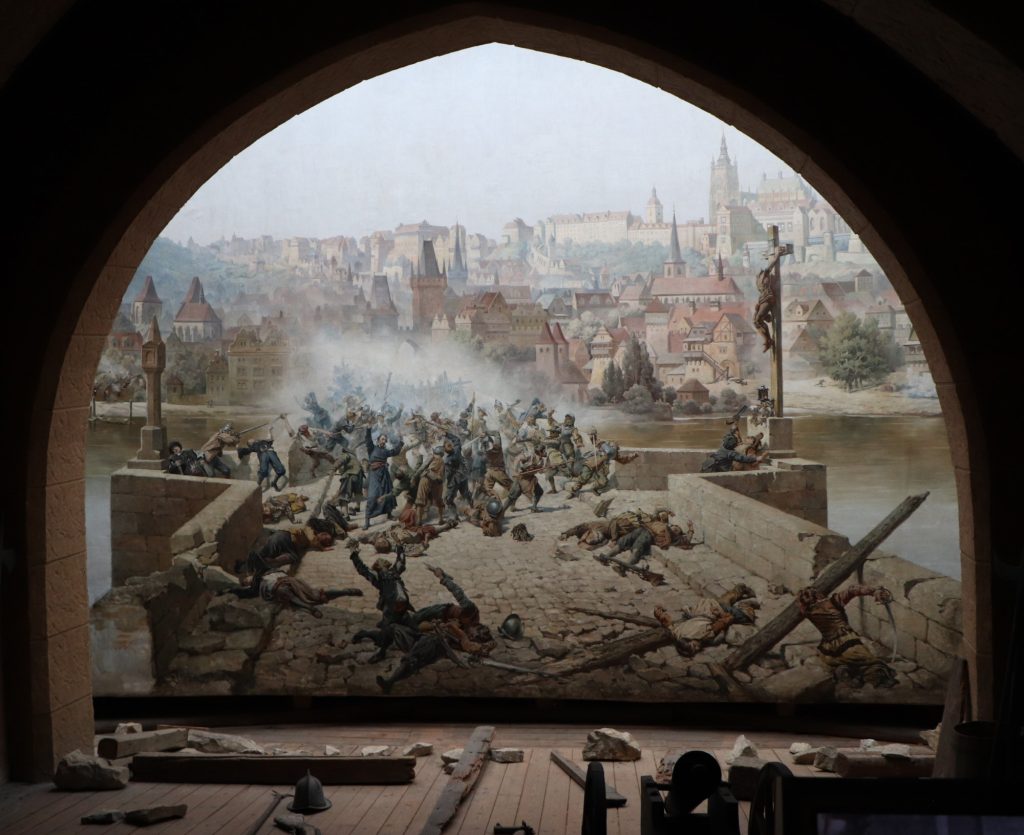
National museum
The National Museum is an interesting beast. On the surface, it has a bizarre mix of exhibits. There was a sequence of rooms that told the story of the early times of the Czech lands. An exhibition about the communist takeover and repression in the 1950s. But also a room full of minerals. A dinosaur skeleton. Several rooms with exhibits like Mammoths and ancient sea monsters. And a Beatles’ record released in the communist east in 1969.

The building itself is very imposing and pompous. It was built in the late 1800s as part of the national awakening going on all over Europe at the time. It is a singular piece of very impressive architecture, perfectly symmetrical and uniform – compared to the organically grown Prague Castle, it illustrates just what late 1800s industrialized economies could do compared to a few hundred years earlier. The Castle has more charm, but the museum is more impressive. Don’t miss the room above the glass dome above the Czech Pantheon room. It offers another viewpoint over the city.
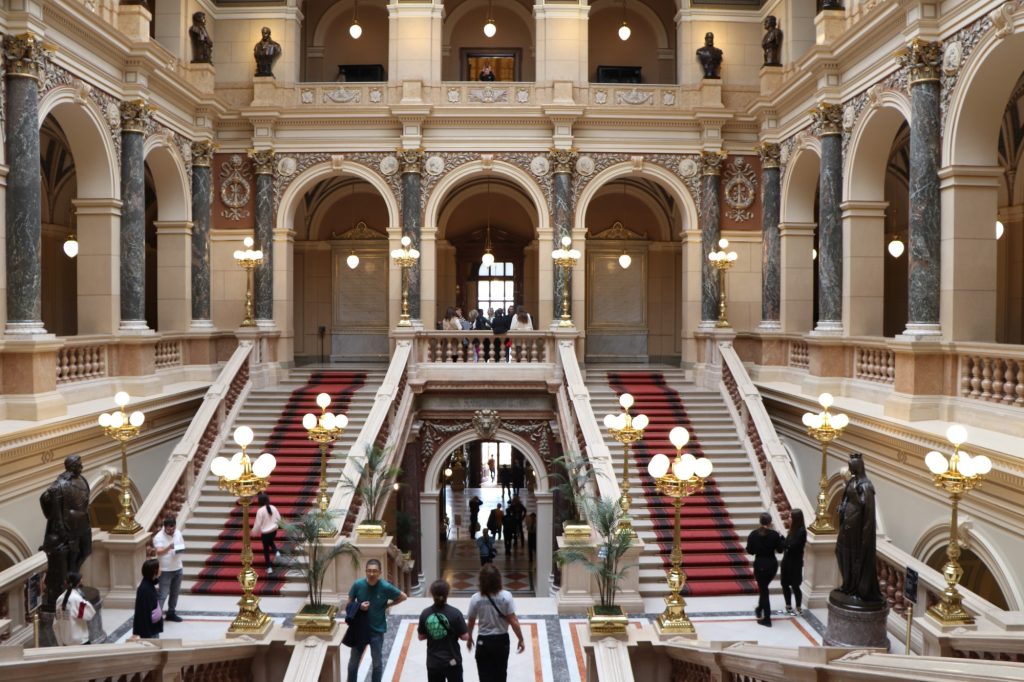
As I interpret it, the point of the building is to basically show off anything that is “Czech”. The fossils were found in the Czech lands. The minerals are from the Czech lands. Etc. It is just unusual to see it all thrown together in a single building, rather than being separated by topic into multiple museums. I get the feeling that the history bits are late additions, with the natural history aspects being the original point of the museum.
By the way, the middle ages were fun. The extents of the kingdom of Bohemia shifted all the time as a result of dynastic policies and random inheritances of lands. For example, I had no idea that the Premyslids ruled over not just the Czech lands (Bohemia) but also Moravia, Silesia, a large chunk of Poland, and significant parts of Hungary.
We unfortunately missed the exhibition about the 20th century, as it was off in the “New Building”. It was all a bit confusing exactly what you could and could not access with which ticket, and how to find your way around.
The Cold War Bunker
Close to the National Museum is the Jalta Hotel, built after World War II to house foreign diplomats and high-ranking state guests. The funny thing is it was built to camouflage the bunker underneath it – the bunker was built first, and then the hotel was built in order to fill in the otherwise quite obvious empty spot around Vaclav square. The bunker is now a museum, and we took the guided tour that is mandatory to access it.
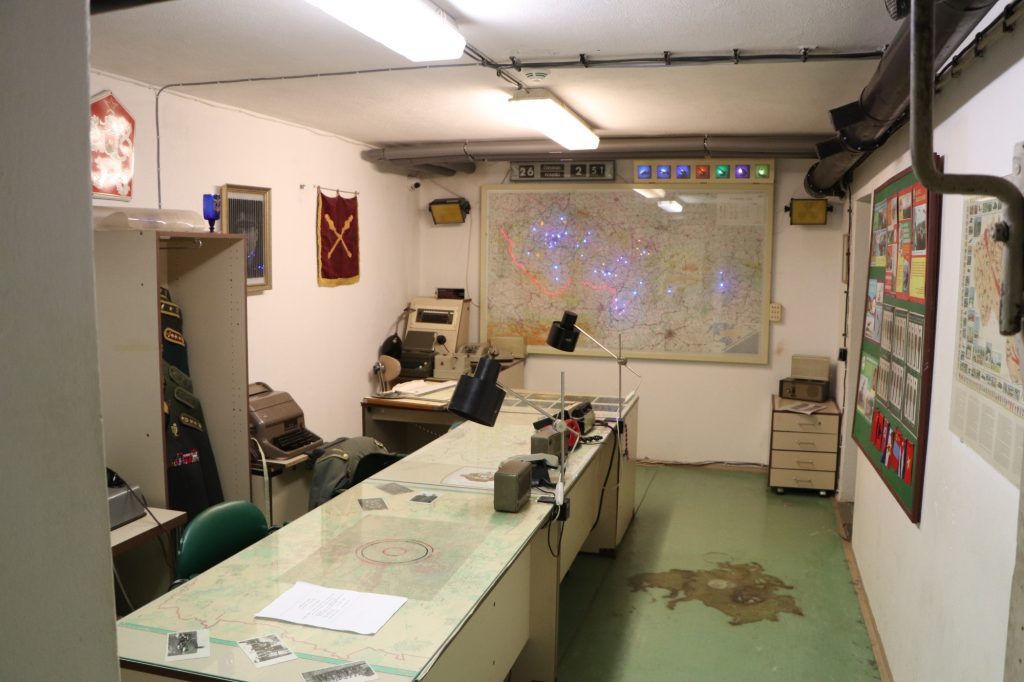
The contents of the bunker is reconstructed – unfortunately for history buffs, it took some years after the end of the Cold War until the bunker was constituted as a museum. Not all of the original bunker is accessible either. But what is there serves to illustrate some themes of Cold War Czech life: the difficulties of travel abroad, the surveillance and oppression from the secret police, and the constant preparation for war.

Apparently, a key user of the bunker was the secret police. They used it to manage the wiretaps and microphones in the hotel. As shown in the photo above, different hotel rooms had different priorities for listening. The staff could only listen to a few rooms at a time, so they had to prioritize. Western diplomats would be put in the red rooms which were checked the most often.
The guide was great, and you got to touch and hold things in a way that is rare in most museums. We could crawl through the escape tunnel that leads out towards Vaclav square, and they had deactivated vz. 58 assault rifles you could hold.
Towers
Prague is full of towers that you can climb to get a view of the city. We climbed as many as we had time for, but there are many more…

I think the best view is from the Petrin tower (the scale model of the Eiffel tower sitting on a hill next to the castle hill). It is a great location, and it is built as a modern lookup point without the heavy walls you find in the older towers like the Old Town Bridge Tower, the old City Hall tower, and the St Vitus Cathedral tower in the castle.
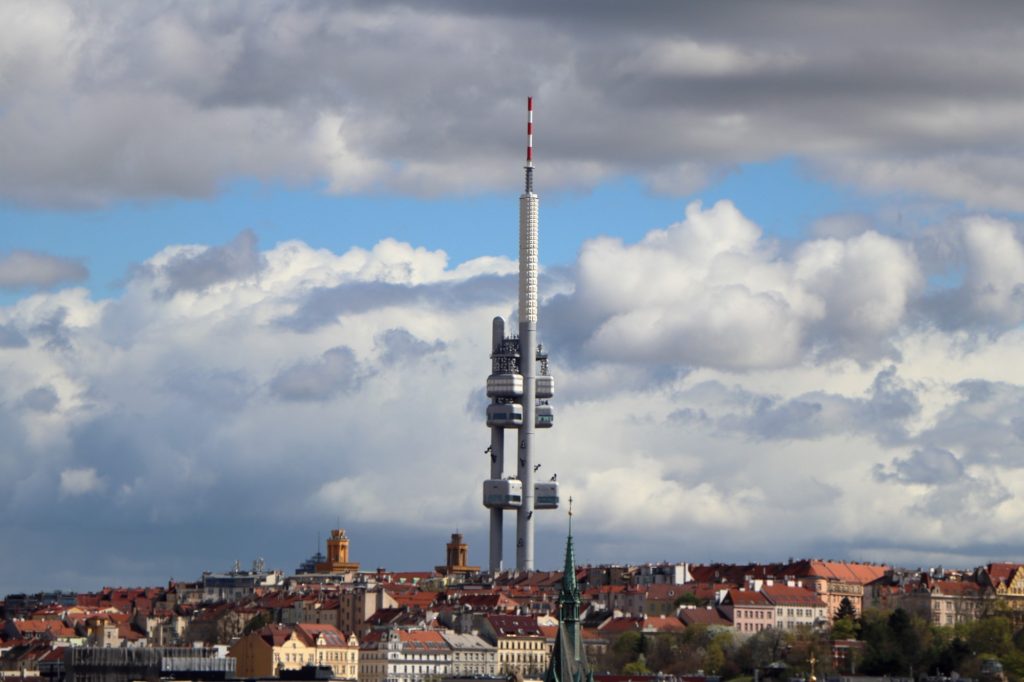
The TV tower is an interesting building in its own right, but the view is not all that great since you have to look out through rather dirty windows. I much prefer being outdoors.

The old City Hall tower has an amazing ramp inside it that makes it very easy to climb and provides an architectural spectacle well worth seeing.
Graffiti from the past
It is well-known that graffiti is nothing new, and Prague gave us several examples of this. The stones around the side of the tower of St Vitus cathedral contained carvings from the 1800s and 1900s. The underground levels of the old City Hall had served as a prison in the 1600s, and some prisoners had carved their names and year of captivity into the wall.
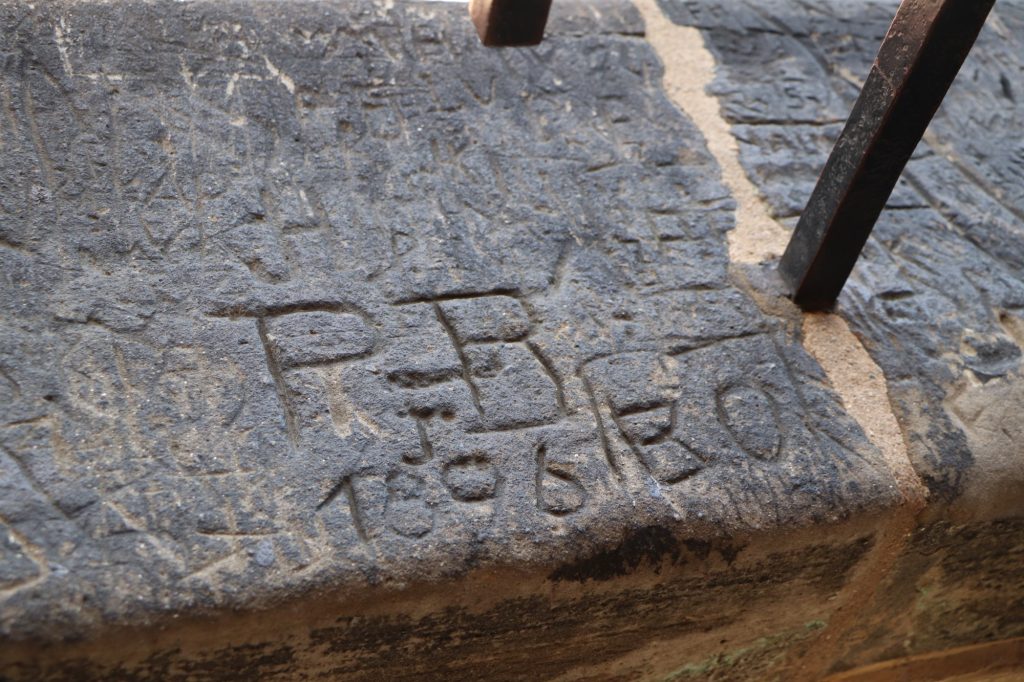
Current wars
The two current big conflicts in the Ukraine and in Gaza were subtly present, but not at all to the same extent that the Ukraine war was last year in Berlin. Official buildings tended to have a Ukrainian flag hanging out, but there were no big public shows of support for Ukraine. For example, the new city council office had both an Israeli and a Ukrainian flag alongside the Czech, EU, and Prague flags.

In the Jewish quarter, the war in Gaza was quite present. There were several chests of collections to support Israel, and outside the main entrance they had put up posters with pictures of the hostages from the October 7 2023 attack.

Final words
We could go back to Prague for another week and still have new things to see. Several interesting museums were closed due to the season, and at some point I have to go back to see the Air Force museum and the tank museum. Among others.